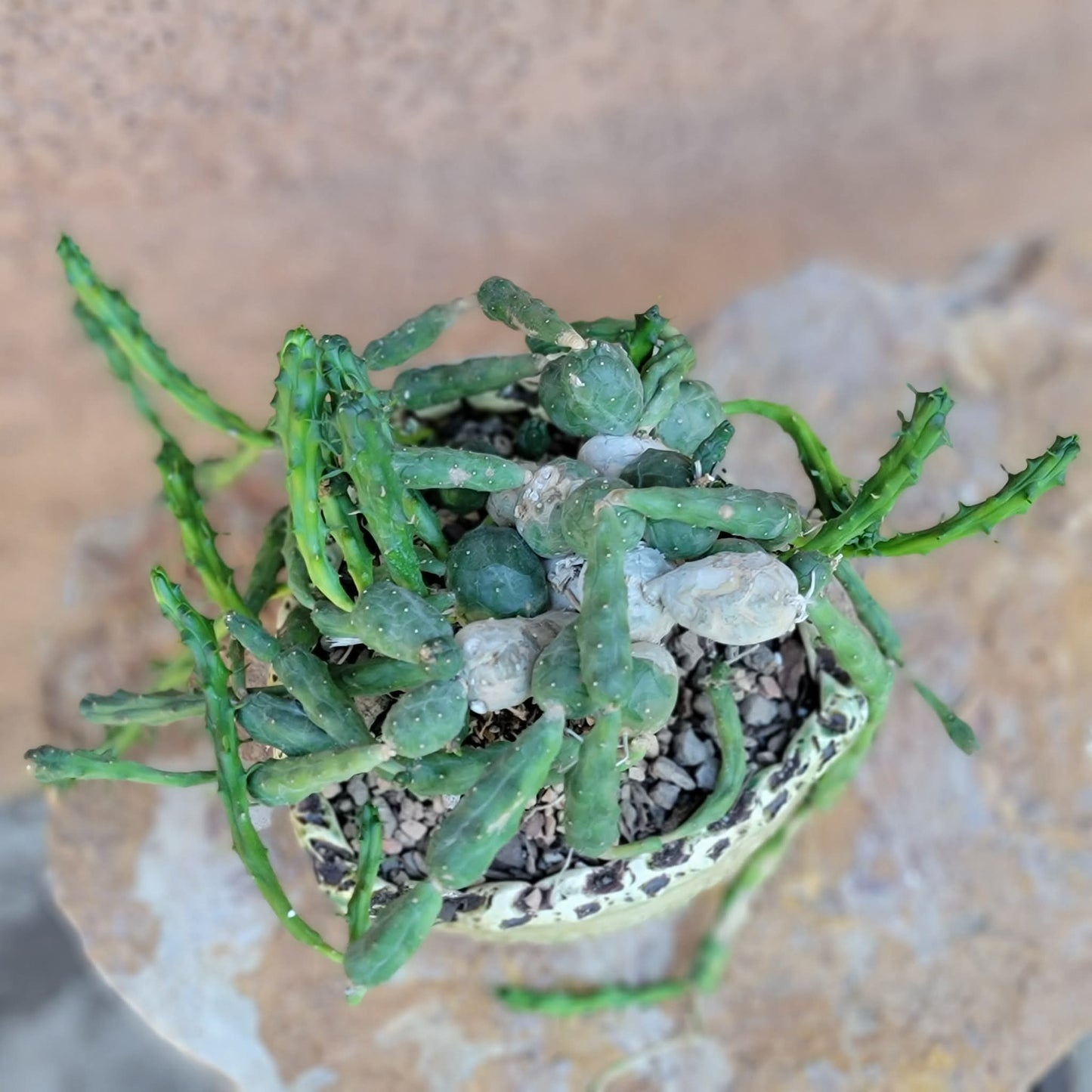Shangri-Ha Cactus Ranch
Euphorbia globosa
Euphorbia globosa
Regular price
$115.00 USD
Regular price
$115.00 USD
Sale price
$115.00 USD
Unit price
per
Shipping calculated at checkout.
Couldn't load pickup availability
Euphorbia globosa
You will receive this exact specimen.
Measures 10" wide x 4" tall.
Roots as shown.
Showcased here in one-of-a-kind handmade pottery (sold separately).
Will be shipped bare root.
Euphorbia globosa is a unique and intriguing dwarf, spineless succulent native to South Africa. It is also known by the common names Globose Spurge, Globose Euphorbia, and Roundish-jointed Spurge.
Here are some key characteristics of Euphorbia globosa:
- Appearance: This succulent features distinct globular, segmented stems that can grow up to 8 cm tall and form dense mats up to 30 cm in diameter. As the plant matures, the older segments can callous over and create a base resembling a woody root (caudiciform base).
- Origin and Habitat: Euphorbia globosa originates from South Africa, particularly the Eastern Cape Province. It thrives in arid regions, rocky outcrops, sandy soils, and dry grasslands with well-draining soil.
- Growth and Care:
- Sunlight: Prefers full sun to partial sunlight, needing at least 5 to 8 hours of sun daily, but avoid intense afternoon sun.
- Watering: It's a drought-tolerant plant and should be watered sparingly, allowing the soil to dry out completely between waterings. Water more frequently during summer and keep the plant dry in winter.
- Soil: Requires well-draining soil, such as a mineral soil, gritty mix, or cactus/succulent potting mix. You can enhance drainage by adding perlite or pumice to regular potting soil.
- Temperature: Thrives in warm temperatures, ideally between the 70s and 80s°F. It is not cold hardy and should be brought indoors when temperatures drop below 55°F.
- Flowers: Produces small yellow-green flowers during the spring and summer.
- Toxicity: Like all Euphorbias, Euphorbia globosa contains a milky, toxic sap that can cause skin and eye irritation and is harmful if ingested. Handle it with care and keep it out of reach of children and pets.
- Propagation: It can be propagated from stem cuttings.














